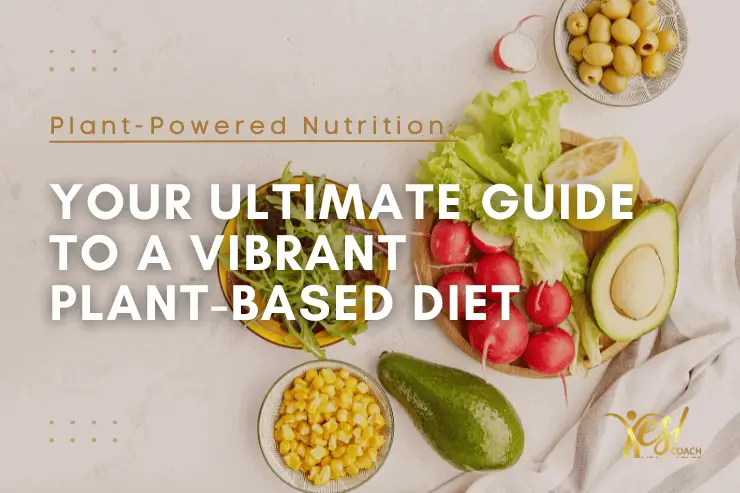Plant-Powered Nutrition: Your Ultimate Guide to a Vibrant Plant-Based Diet
In the ever-evolving landscape of nutrition, embracing a plant-based diet emerges as a beacon of health, sustainability, and vitality. This lifestyle choice is more than just a passing trend; it’s a commitment to nourishing your body with the best that nature has to offer. With benefits ranging from reducing chronic disease risks to lessening our environmental footprint, the shift towards plant-based nutrition is both a personal and planetary health win. But let’s break it down, keeping it as easy to digest as your favorite smoothie bowl. We’re here to guide you through the ins and outs of adopting a plant-focused lifestyle, supported by science, but without the jargon.
-
The Power of Plants: Unveiling the Benefits of a Plant-Based Diet
Why pivot to plant-based? The science stacks up: adopting a plant-based diet can significantly lower your risk of heart disease, diabetes, and certain types of cancer. Plants are loaded with fiber, vitamins, and antioxidants that work together to support your immune system, improve digestion, and boost your energy levels. On the environmental front, plant-based eating requires fewer resources like water and land, and produces fewer greenhouse gases compared to traditional diets. In short, it’s a win-win for your health and the earth.
-
Myth-Busting: Separating Fact from Fiction in Plant-Based Nutrition
Let’s tackle some myths head-on. Concerned about protein? Plant-based proteins like lentils, chickpeas, tofu, and tempeh have got you covered. Worried about meal variety? The plant-based world is your oyster mushroom! From savory stews to decadent desserts, there’s no shortage of flavor or creativity. By debunking these myths, we open up a world of possibilities for nutritious and satisfying meals that keep you and the planet thriving.
-
Transitioning with Ease: Practical Tips for Your Plant-Based Journey
Taking the first step towards a plant-based lifestyle can seem daunting, but it’s all about making small, sustainable changes. Start by incorporating more fruits, vegetables, whole grains, and legumes into your meals. Explore plant-based recipes that excite your taste buds and broaden your culinary horizons. Remember, it’s about progress, not perfection. Every plant-based meal is a step in the right direction for your health and the environment.
-
Nutrient Know-How: Ensuring a Balanced Plant-Based Diet
Ensuring you’re getting all the necessary nutrients is crucial on a plant-based diet. Focus on a variety of foods to get a wide range of vitamins, minerals, protein, and healthy fats. Pay extra attention to nutrients that might require more planning, such as vitamin B12, omega-3 fatty acids, iron, calcium, and vitamin D. Supplements can be helpful for certain nutrients like B12 and D. Staying hydrated and listening to your body’s needs are key to maintaining balance and vitality.
Conclusion: Your Green Light to Go Plant-Based
Embarking on a plant-based diet is an exciting journey towards better health and a more sustainable lifestyle. With the right knowledge and a bit of culinary curiosity, you’re well-equipped to explore the abundant world of plant-based eating. Whether you’re aiming to improve your health, protect the environment, or both, the benefits of a plant-based diet are undeniable. So why not take the plunge and see where this green path leads? Your body, taste buds, and the planet will thank you.
FAQs
- Q: Do I need to go fully vegan to enjoy the benefits of a plant-based diet? A: Not at all! Every step towards incorporating more plant-based foods into your diet counts.
- Q: Can I still enjoy dining out on a plant-based diet? A: Yes! Many restaurants now offer delicious plant-based options, making it easier than ever to stick to your dietary choices.
- Q: What if I miss the taste of meat? A: There are many plant-based meat alternatives available that closely mimic the taste and texture of meat, satisfying those cravings without the animal products.
SEO NOTES
Primary Keyword: Plant-Based Diet
Secondary Keywords: Benefits of Plant-Based Diet, Plant-Based Nutrition, Transitioning to Plant-Based, Plant-Based Recipes, Plant-Based Protein, Nutrients in Plant-Based Diet
SEO Optimization Applied:
- Title: “Plant-Powered Nutrition: Your Ultimate Guide to a Vibrant Plant-Based Diet”
Incorporates the primary keyword and is designed to catch both the reader’s and search engines’ attention. - Meta Description: “Explore the vibrant world of plant-based eating with our 2024 guide. Learn about the health benefits, essential nutrients, and practical tips for adopting a nutritious, plant-focused lifestyle.”
Includes primary and secondary keywords (“plant-based eating,” “health benefits,” “essential nutrients”) to improve visibility. - Headers and Subheaders: Use keywords in H2 and H3 tags where relevant, like “The Power of Plants: Unveiling the Benefits” and “Transitioning with Ease: Practical Tips for Your Plant-Based Journey.”
Helps structure the content and enhances SEO by highlighting important sections. - Throughout the Content: The primary keyword is naturally integrated a few times throughout the article, along with secondary keywords. This is done in a way that feels natural and provides value to the reader. For example, discussing “the benefits of a plant-based diet” in the first section, and providing “plant-based recipes” in the transition tips.
- FAQ Section: Answers common questions using secondary keywords. This not only helps with SEO but also addresses specific queries that readers may search for.
- Conclusion: Reinforces the main topic (using the primary keyword) and encourages the reader to take action, a good SEO practice to keep engagement high and bounce rates low.
SEO Key Words Usage:
- Introduction: Mention “plant-based diet” to set the article’s focus right from the start.
- Benefits Section: Use “benefits of plant-based diet” and “plant-based nutrition” to strengthen the article’s relevance to these queries.
- Myth-Busting Section: Include “plant-based protein” and other nutrient-related secondary keywords to target those specific informational searches.
- Transition Tips: “Transitioning to Plant-Based” and “Plant-Based Recipes” are woven into practical advice, catering to readers looking for guidance and meal ideas.
- Nutrient Section: Highlight “nutrients in plant-based diet” to attract readers interested in the nutritional aspects.
FOLLOW US ON:
Facebook
Pinterest
Instagram
LinkedIn







